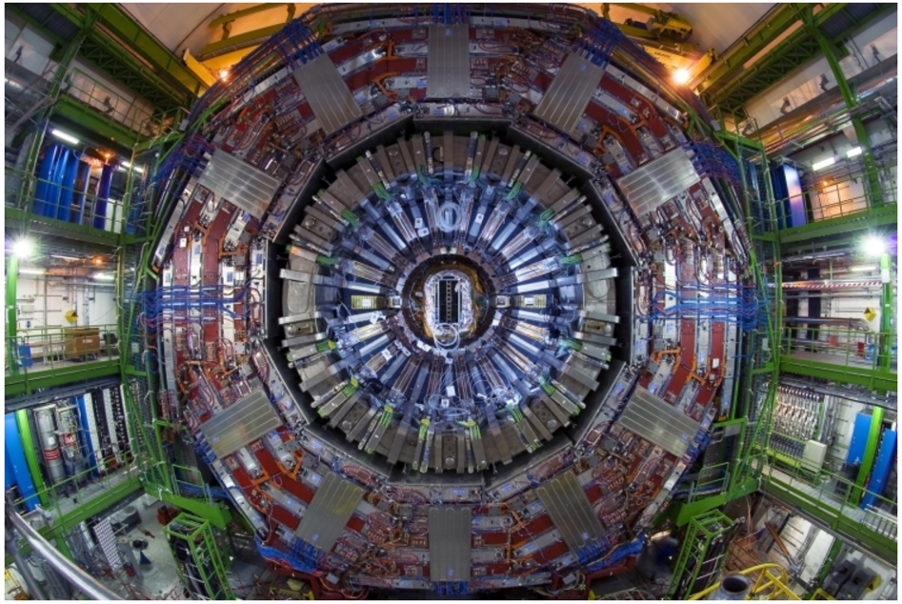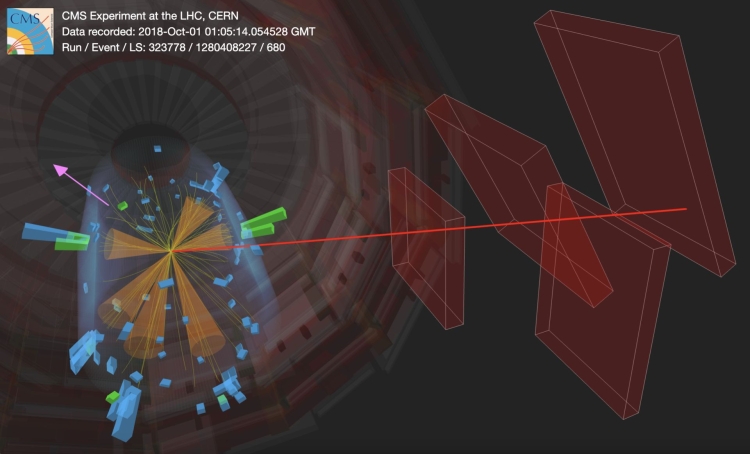
The CMS experiment presents the first-ever search for a Higgs boson decaying to charm quarks when the Higgs boson is produced along with two top quarks.
The Higgs boson plays a central role in our understanding of the fundamental forces of Nature, endowing elementary particles with mass through its interactions. While the Higgs boson interaction with the heavier third-generation quarks has been observed, probing its interaction with second-generation quarks, such as charm, remains a formidable challenge (see the figure below, which depicts the observed interaction strengths of some elementary particles with the Higgs boson—the Higgs-charm interaction is yet to be observed). The CMS Collaboration has now conducted the first-ever search for the Higgs boson decaying to charm quarks (H→cc) in events where the Higgs boson is produced alongside two top quarks (ttH production). Moreover, the measurement of the ttH production with the Higgs boson decaying to bottom quarks (H→bb) is performed simultaneously. Exploiting cutting-edge AI techniques, this novel approach sets the most stringent constraints to date on the Higgs-charm interaction, bringing us closer to unraveling the Higgs boson’s relationship with lighter quarks.
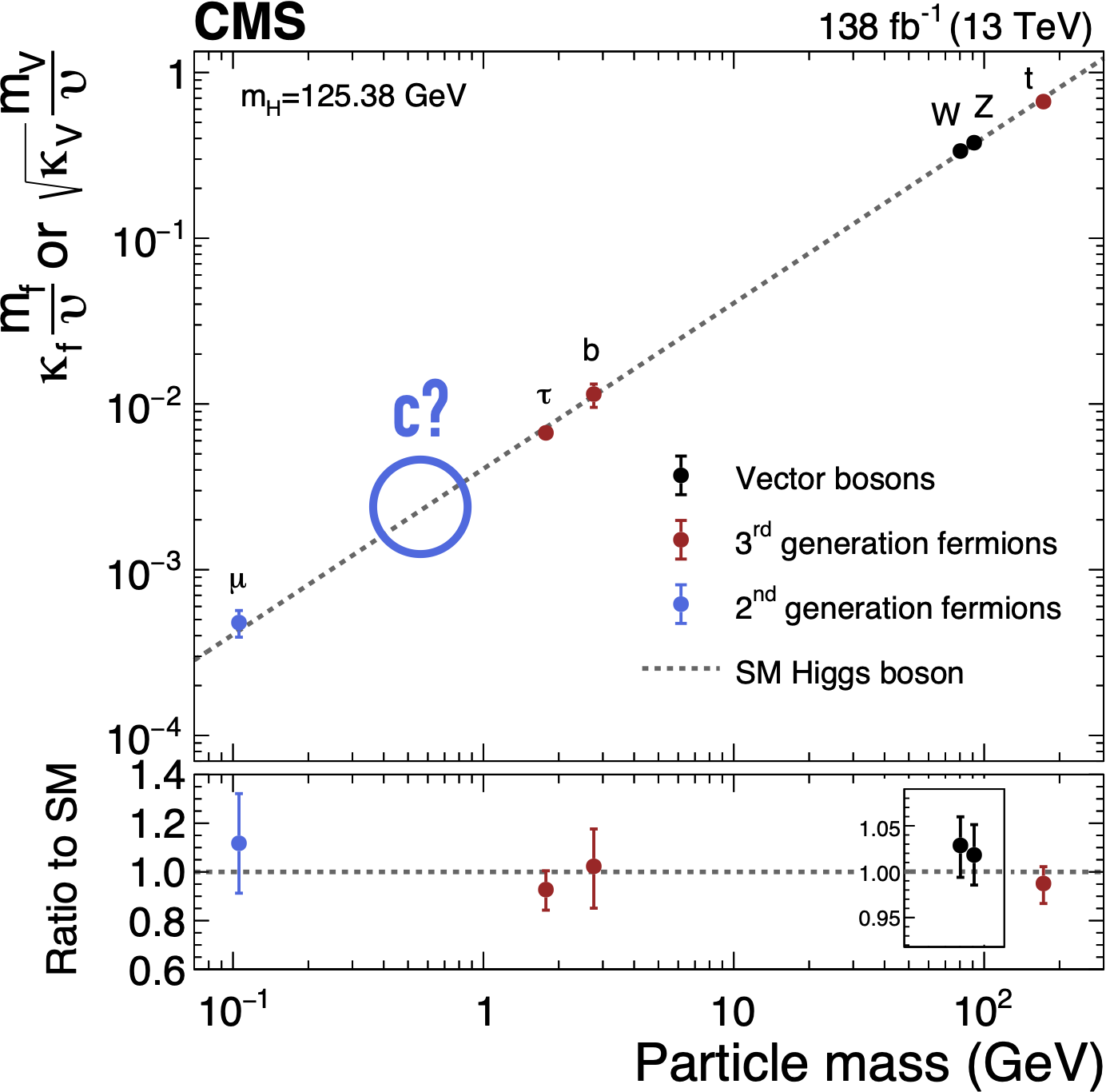
Above: The measured coupling modifiers of the Higgs boson to fermions and heavy gauge bosons, as functions of their masses.
A Challenging Path to Discovery
Higgs boson production in association with a top quark pair is a rare process. Moreover, these events exhibit a complex signature. The presence of multiple jets—collimated sprays of particles initiated by quarks or gluons—as well as electrons or muons, makes it particularly challenging to distinguish ttH signal events from background processes.
Identifying charm quark jets within these events is particularly difficult. Charm quarks have a short lifetime and produce hadrons that travel only a small distance before decaying, making them hard to distinguish from jets formed by up and down quarks, and gluons. Traditional identification methods, also referred to as “tagging”, struggle to efficiently recognize charm jets, necessitating the development of more advanced discrimination techniques.
“This search required a paradigm shift in analysis techniques,” explains Sebastian Wuchterl, a research fellow at CERN. “Because charm quarks are harder to tag compared to bottom quarks, we relied on cutting-edge machine learning techniques to separate the signal from backgrounds.”
Machine Learning Unlocks New Possibilities
Two major hurdles were tackled using deep learning models. The first was the identification of jets originating from charm quarks (charm tagging), which was performed by employing a graph neural network called ParticleNet. The second was to distinguish Higgs boson signals from background, which was tackled with a transformer network—the type of machine learning behind ChatGPT, but trained to classify events instead of generating dialogues.
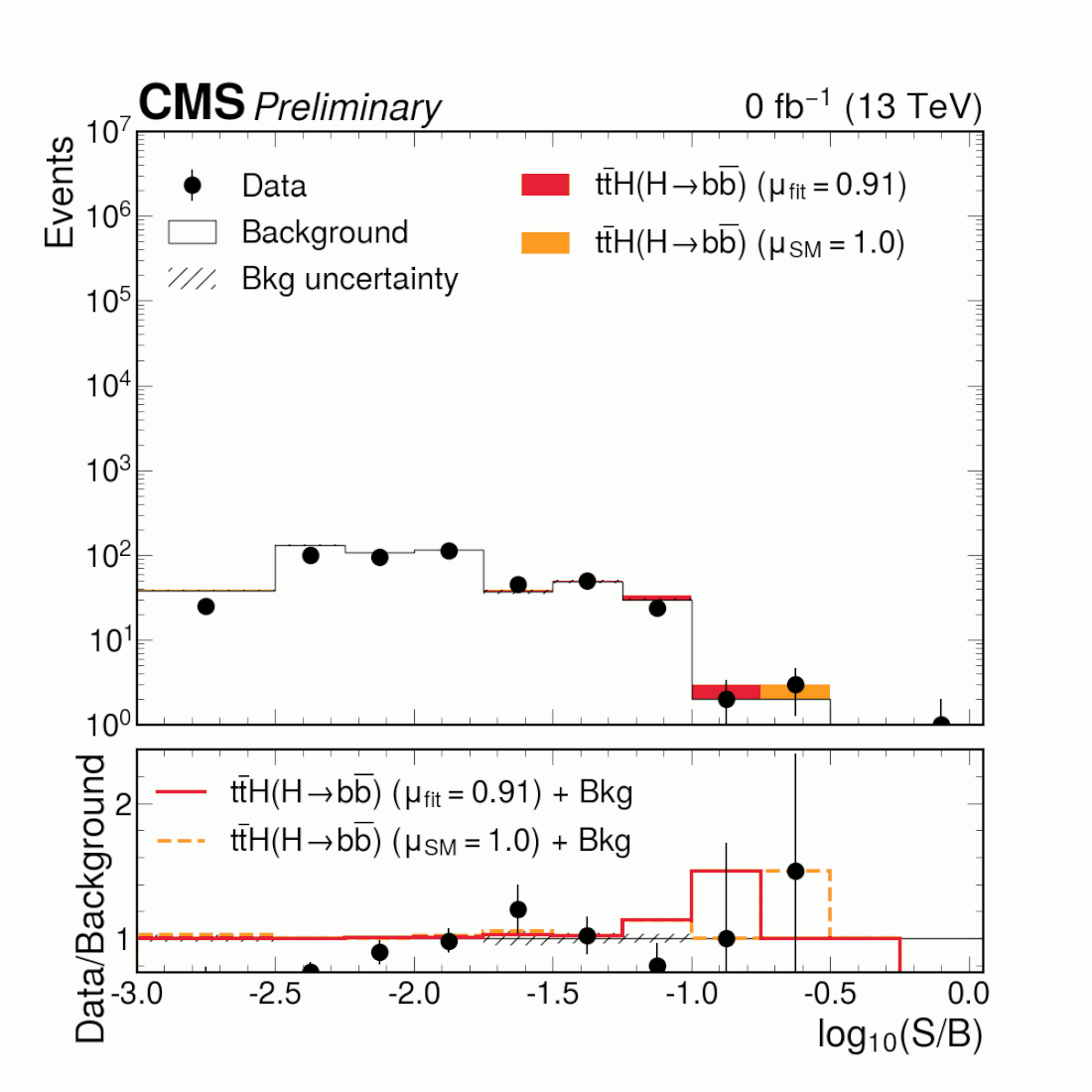
Above: Evolution of the observed and expected event yields with the size of the collected data, as a function of the logarithm of the ratio of the number of signal and background yields.
“Our neural network-based charm tagging algorithm represents a significant improvement over traditional methods,” says Ioannis Paraskevas, a postdoctoral researcher at NKU Athens. “We trained it on hundreds of millions of simulated jets to enhance its ability to recognize charm jets with higher accuracy.”
The Most Stringent Constraints to Date
Using data collected by the CMS experiment from 2016 to 2018, researchers set the most stringent limits yet on the Higgs-charm interaction (as shown in the figure below), improving upon previous constraints by around 35%. This improvement places significant constraints on potential deviations from the standard model prediction.
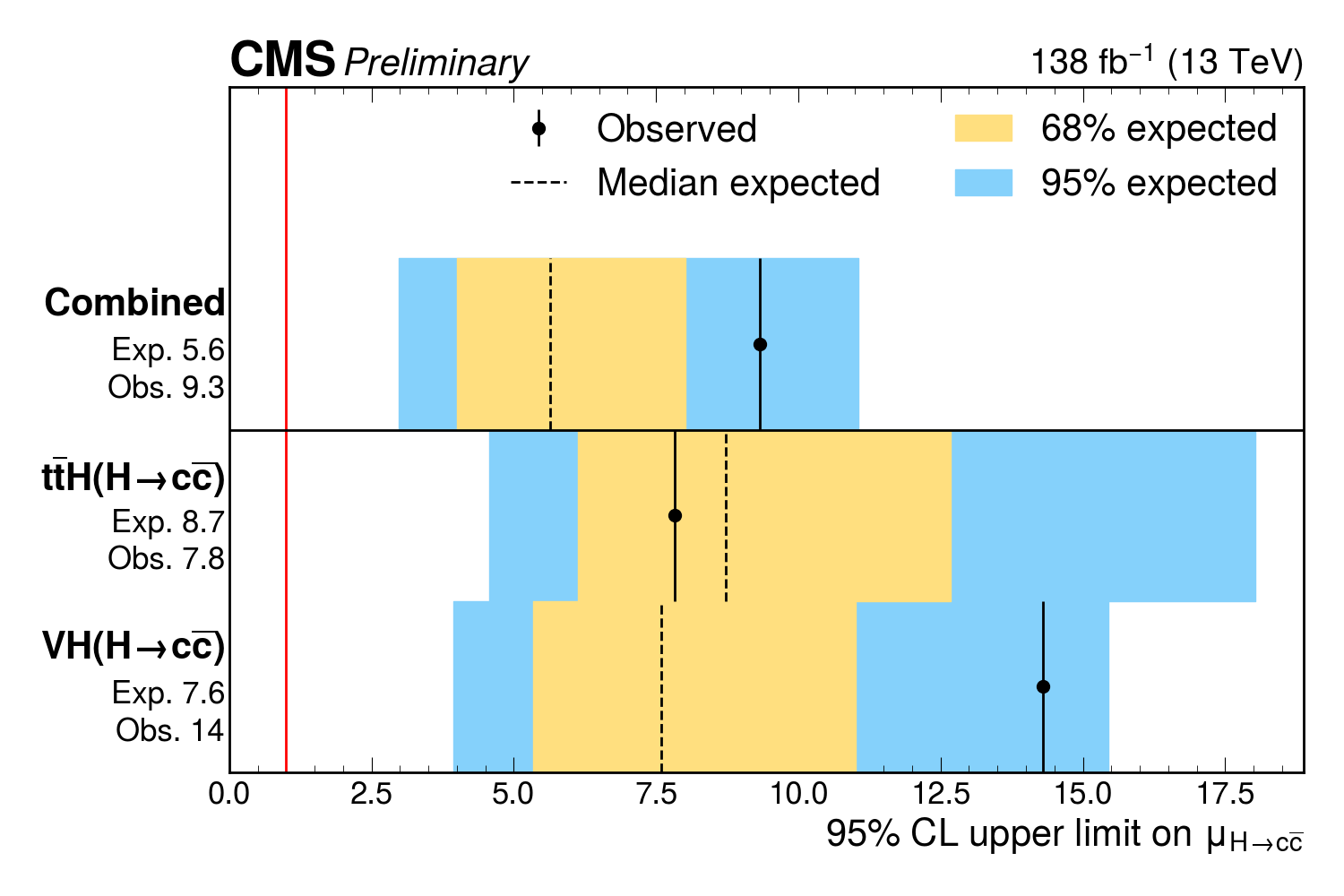
Above: Observed and expected limits on the H→cc signal strength with respect to the standard model expectation.
“Our findings mark a major step,” says Jan van der Linden, a postdoctoral researcher at Ghent University. “With more data from upcoming LHC runs and improved analysis techniques, we may gain direct insight into the Higgs boson’s interaction with charm quarks at the LHC—a task that was thought impossible a few years ago.”
The study opens exciting avenues for future exploration. As the LHC continues to collect data, refinements in charm tagging and Higgs boson event classification could eventually lead to the experimental confirmation of H→cc decays. This would be a crucial step towards a complete understanding of the Higgs boson’s role in the generation of mass for all quarks, and provide key insights into potential physics beyond the standard model.
Written by: Sebastian Wuchterl, for the CMS Collaboration
Edited by: Muhammad Ansar Iqbal
Read more about these results:
-
CMS Physics Analysis Summary (HIG-24-018): "Search for Higgs boson decay to a charm quark-antiquark pair via ttH production"
-
@CMSExperiment on social media: Bluesky - Facebook - Instagram - LinkedIn - TikTok - Twitter/X - YouTube

